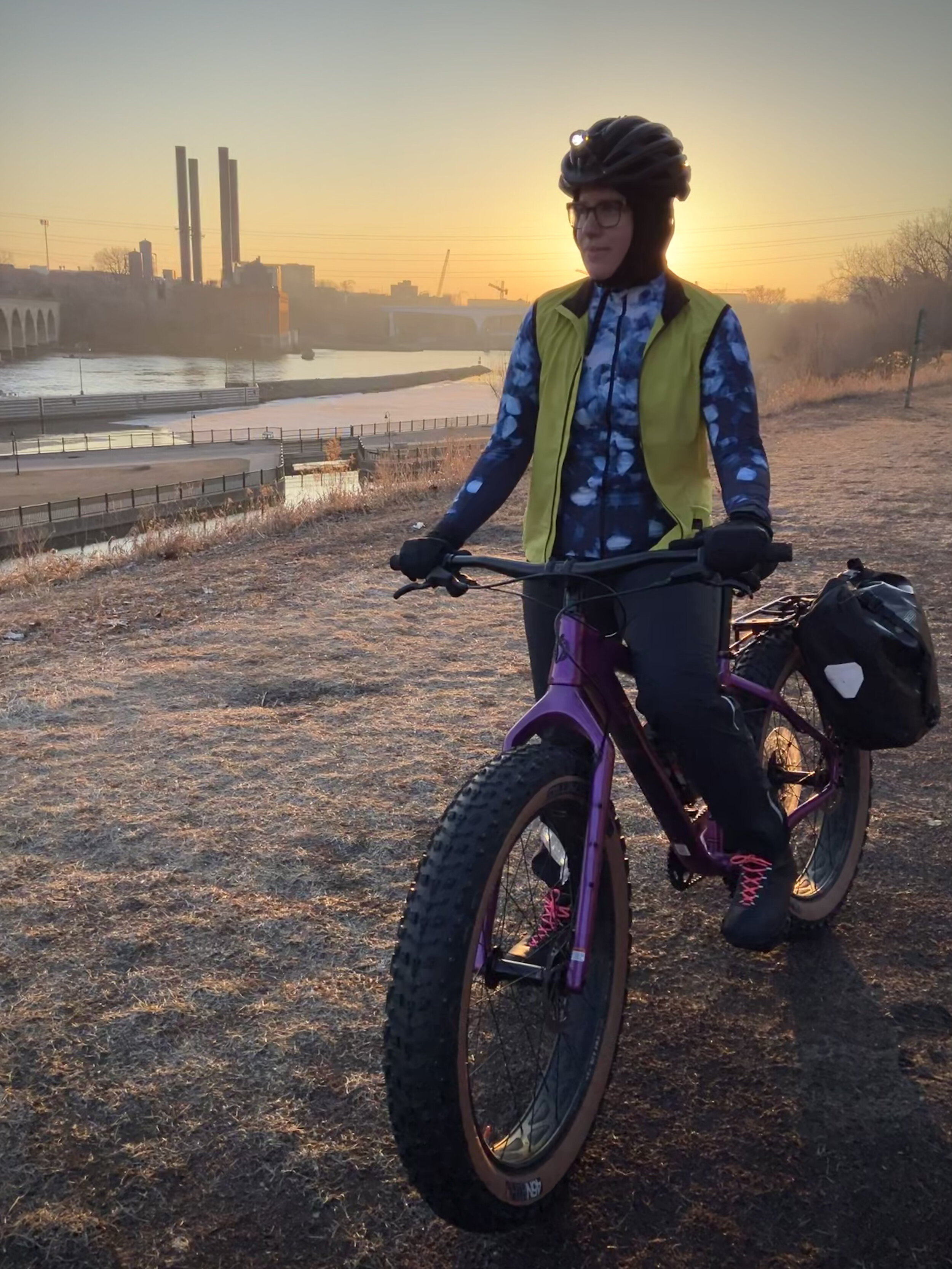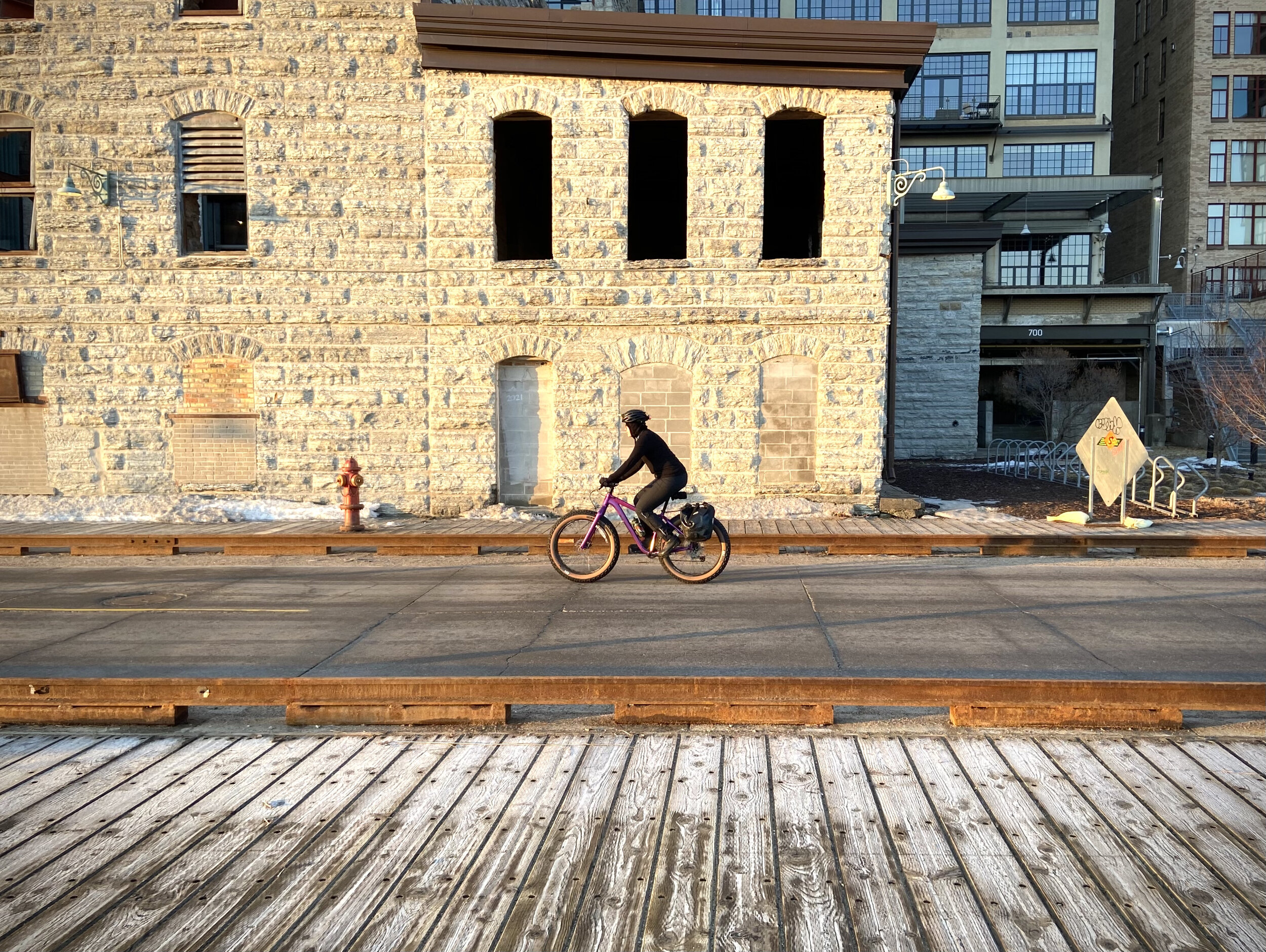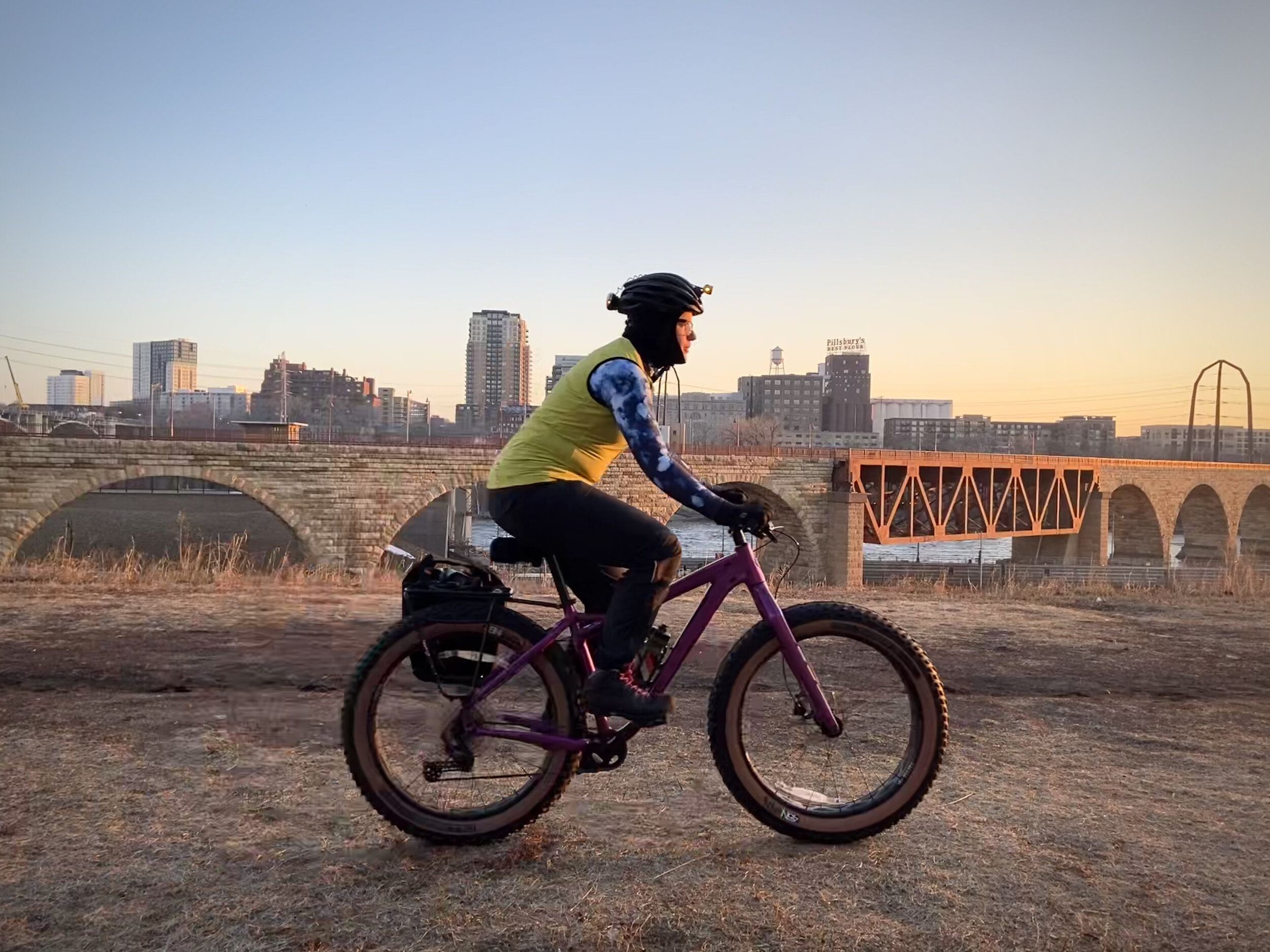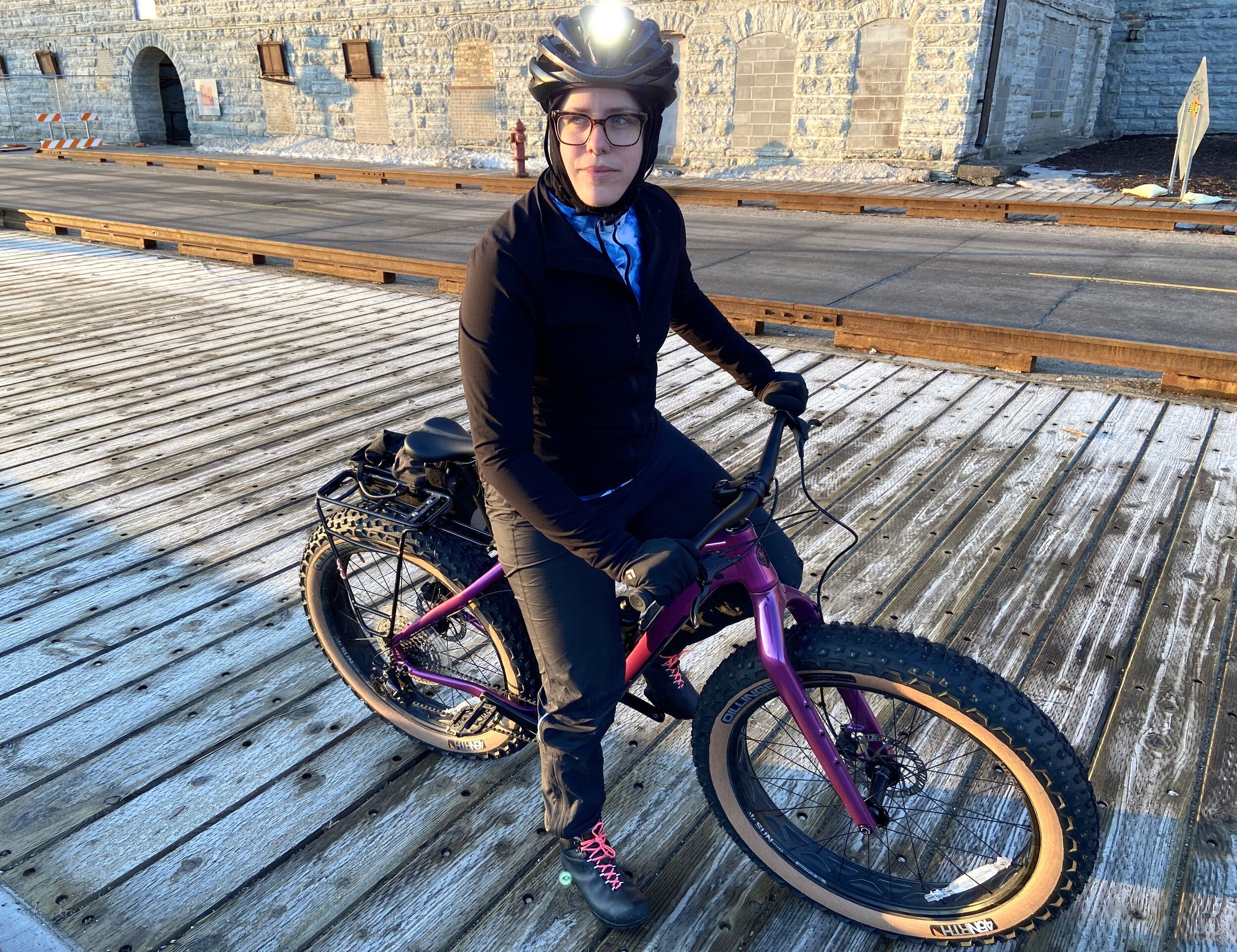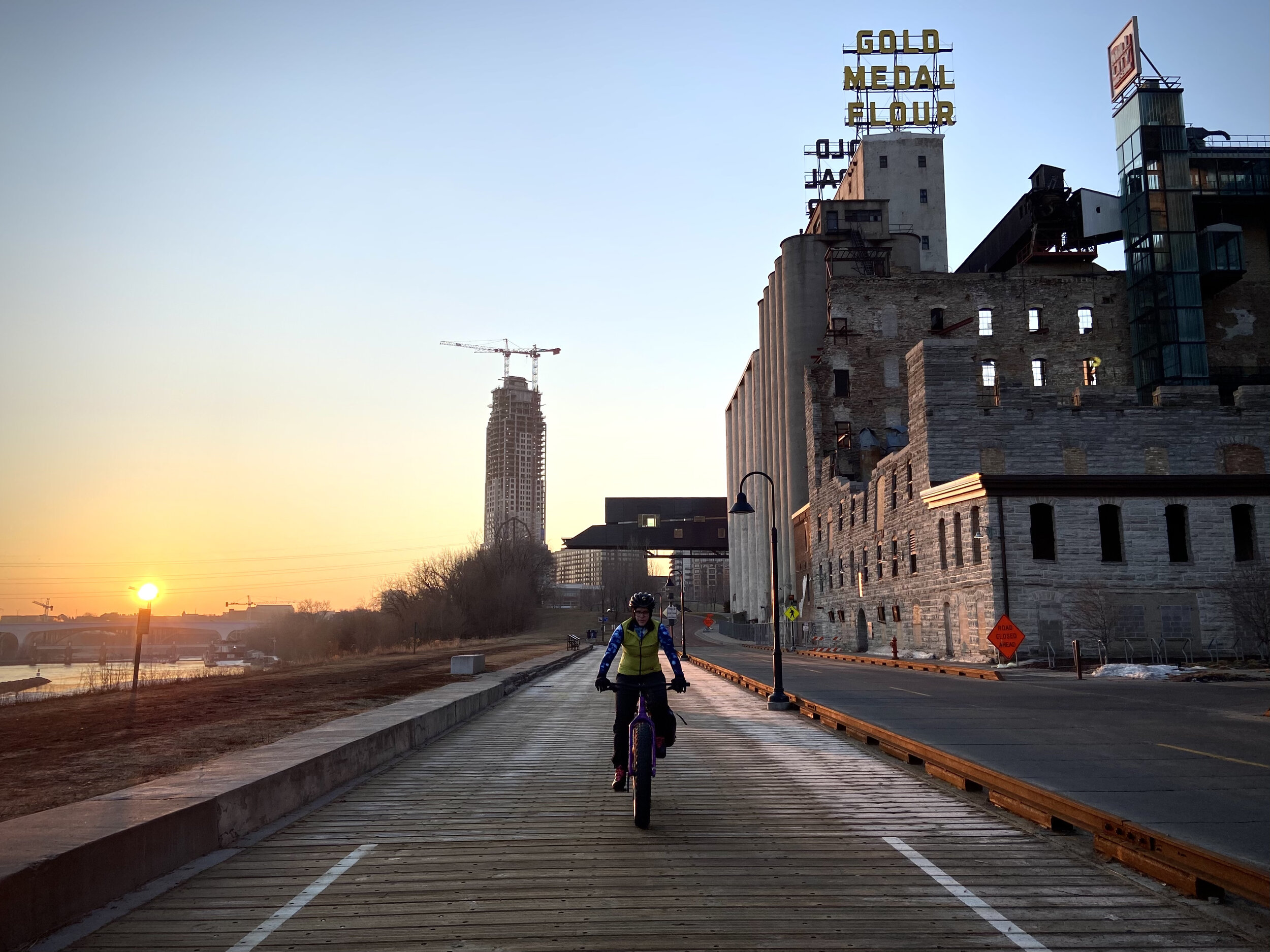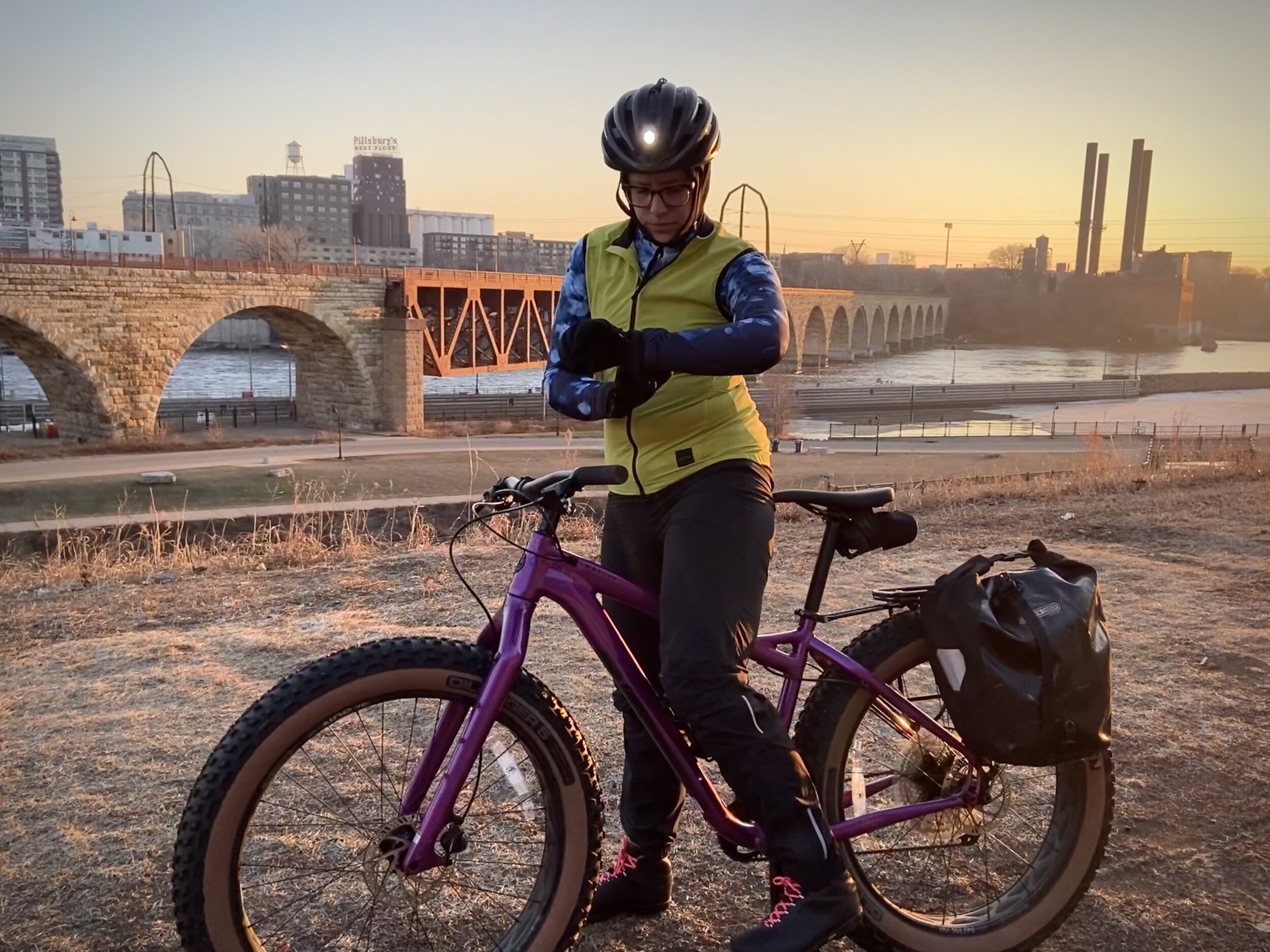Author: Milo Due, Stamina Racing Collective x Machines For Freedom
Here in the frozen north, we have a saying: there is no bad weather, only bad clothing. That’s something I’ve come to know as a year-round commuter in Minneapolis: any conditions are survivable and even enjoyable if you have the right resources, preparation, and attitude. My first winter commuting, I made more than a few mistakes—it took several seasons to get my ride, my gear, and my mindset dialed in. My first mistake was in not properly maintaining and cleaning my bike. My first winter bike, a single speed steel frame road bike, was very special to me because it was one I had built myself with mostly used and salvaged parts (with extensive teaching and support from a friend who stood over my shoulder the whole time, but still). It had many elements that made it perfect for snowy streets—thin, studded tired that could cut through slush and grip onto ice, and a simple, single speed setup to minimize buildup of grit and grime from Minneapolis’ winter roads. But I underestimated how much salt would get into the works, and by winter’s end, several parts were badly corroded. I’ve learned that winter grime needs to be washed away at least once a week—and though this is somewhat onerous, I’ve found I need to give my bike love so it can love me in return. This year, I began commuting with a fat bike, and have loved feeling extra secure on snow and ice. While you don’t need any kind of specific kind of bike to ride in winter, I love the feeling that my hefty tires can conquer all sorts of riding surfaces and weather conditions. On 4.5 inch tires, I feel unstoppable.
Safety First. The first question I always get about winter riding: is it safe? So many drivers know how road conditions can turn a morning commute deadly. And, my answer is, not really—there are definitely always going to be inherent dangers in heading out into ice and snow—but there are things you can do to make it safer (and, in my opinion, it is considerably safer than driving on winter roads). Several factors are very important safety practices for me when winter comes. One is visibility. Wearing bright orange or yellow as an outer layer helps me stand out against the grey and white winter backdrop, and reflective gear and lights make sure traffic can see me at all times. This is especially important as, in winter, snow and ice crust tends to accumulate into bike lanes, forcing cyclists out into the main lane of traffic (which, in Minneapolis, we are lawfully permitted to occupy, but many drivers seem to not know this or not care). I’ve encountered more than a few drivers who are unhappy about sharing the road with non-motorized traffic (and I’ve been yelled at for being on the road at all in winter—my favorite was a driver who screamed at me trying to get home in a snowstorm, “are you insane??” yes, maybe a little…). My approach has been to fully and unapologetically take the whole lane, which I have found much safer than trying to ride over to the side where there might be more icy debris and where cars may pass with chillingly narrow margins, or may not see me at all. And, with road conditions that are often unpredictable (hello, black ice), I go slow. Though winter riders may be tempted to speed up to keep warm and get out of the cold quicker, the challenging road conditions really require us to slow down, stay alert, and stay predictable in our movements.
My next learning curve was winter gear. My first season riding, I was so scared of being cold on the bike that I layered up in the classic big midwestern parka, scarf, and snow pants, putting on as much clothing as possible to guard against the windchill and snow. Very soon I learned that this was overkill—not only did I overheat and nearly drown in my own sweat by the time I got to work, but many thick layers took away the joy of riding because of how constricted I felt. I needed something that would breathe and allow me freedom of movement, but that would still keep me warm. Now, several seasons in, I have learned that less is more, and I’ve come to appreciate the true beauty of a quality base layer. The best base layers are those that wick away moisture from the skin—so when you’re sprinting because you’re late to work (again)—just me?—and then have to stop at a red light, you don’t freeze. For me, this means merino wool or nylon, any other material just won’t do. The Machines for Freedom Luxe Cropped Base is perfect because it fits nicely under anything and does a great job at wicking moisture. In the darkest days of deep winter, I’ll add a medium-weight wool middle layer, but for most days that cannot be classified as “polar vortex”, just a base layer and an outer shell usually does the trick. I have for years used a raincoat and rain pants, and have recently upgraded to the Machines for Freedom All Weather jacket for its ability to stop wind, protect me from the elements, keep me warm, and vent excess heat. A merino wool balaclava also helps to keep my face, head, and neck warm while being lighter weight underneath a helmet, and in extreme temps I’ll throw on goggles to guard against frostbite. Finally, the trickiest part of winter gear is hands and feet—parts that tend to catch all the wind when riding and are hardest to keep warm. Thin wool socks and a good pair of waterproof winter boots (sized up to allow for a layer of air for my body heat to warm) are lifesavers, and I’ll sometimes throw in toe warmers on colder mornings. Some winter riders opt for pogies—mittens that fit over your handlebars and allow for greater dexterity and wind blocking—but I’ve loved my lobster claw mittens that keep my digits warm together while allowing me to shift and break.
The mindset. As many cyclists know, the most challenging aspect of riding can often be the mental or emotional component. Though I am a native Minnesotan, I’ve long been a person who has dreaded winter, with its bleak, dead landscapes, harsh wind and temperatures, and wet snow. I’ve braced against the changing of the seasons, cursed the waning light, and wished for summer while trying to keep warm and dry inside. Riding year-round has totally changed my outlook on winter. Getting outside in the fresh air daily (however much it may sting the lungs at first) has made me appreciate how the landscape changes with the seasons, and notice moments of desolate winter beauty: spotting eagles through the bare trees, stopping to watch a frosty sunrise over the Mississippi, feeling like I have the city all to myself. Most importantly, I’ve learned to trust in my own toughness, resilience, and ability to withstand the elements, and I’ve learned to trust my body as the engine that gets me from place to place. On my bike, I’m not beholden to gas prices, stop-and-go traffic, bus schedules, or parking restrictions—and I can revel in the satisfaction of getting where I need to go each day by my own steam.
My advice for anyone in a cold climate considering becoming a year-round cyclist is this: take winter and its challenges seriously, but believe in your capability to acclimate and to meet those challenges. You don’t need all the fanciest gear or the latest fat bike, but you do need to put some thought into your clothing (frostbite is real!) and experiment with what works for you. And, find community! Minneapolis has a great community of year-round riders who are more than willing to share their wisdom and tricks. For instance, Grease Rag, a Minneapolis collective centering FTW (femme, trans, and women) cyclists, hosts a gear swap and skill-share every year so more people can access this knowledge and otherwise costly winter gear. The more I have made it a regular practice to commute by bike every day, the more I can take the discomforts of winter in stride, and see the beauty in the ice and snow (and slush and grime).






